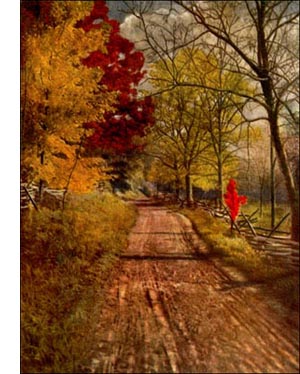Yellow Locust or Black Locust Tree
 Locust, Yellow Locust, Black Locust (Robinia Pseudacacia, Linn.)-A tall, slender tree, 40 to 80 feet high, with erect branches forming an oblong head. Bark rough, dark grey, deeply furrowed; twigs smooth, silvery, downy, becoming reddish brown. Wood brownish yellow, hard, coarse grained, heavy, strong, very durable in contact with soil. Buds pointed, silky, all but tip hidden.
Locust, Yellow Locust, Black Locust (Robinia Pseudacacia, Linn.)-A tall, slender tree, 40 to 80 feet high, with erect branches forming an oblong head. Bark rough, dark grey, deeply furrowed; twigs smooth, silvery, downy, becoming reddish brown. Wood brownish yellow, hard, coarse grained, heavy, strong, very durable in contact with soil. Buds pointed, silky, all but tip hidden. Leaves 8 to 14 inches long, alternate, odd-pinnate of 9 to 19 leaflets, silvery, downy when young, later, pale beneath, dark green above, turning yellow in early autumn. Stipules in pairs, spiny, persistent, becoming thorny. Flowers, May to June, in axillary, drooping racemes, white, fragrant, pea-like, of good size.
Fruit thin, brown, smooth, 4 to 8-seeded pods, hanging on through the winter. Preferred habitat, gravelly soil on mountain slopes. Distribution, Pennsylvania to Georgia, west to Iowa and Oklahoma. Naturalised in New York, New England, and west of Rocky Mountains. Uses: Planted as a shade and ornamental tree. Wood exceptionally durable and strong. Used in shipbuilding, for mill cogs, posts, ties, wagon hubs and spokes, and especially for tree nails. Excellent fuel. Bark has tonic properties.
The locust is a beautiful tree in its youth, and being a rapid grower, becomes sturdy and spreading in a few years. But its twigs and branches are brittle, the wind breaks them, and the symmetry of the crown is soon lost. An old locust is a dead, craggly-looking object for half the year. Coarse, ragged bark covers trunk and larger branches. The twigs show no sign of buds.
These trees have a fashion of hiding their winter buds in the wood of the twig, as the sumachs do. The pods hang on all winter, chattering in the wind, and calling attention to the hopelessly untidy appearance of the tree as a feature of the landscape.
Whatever may be urged against it -and it surely has its faults-the locust redeems itself in the late spring. The delicate leaf spray is silvery as it unfolds, changing to dark green as the masses of white fragrant bloom are shaken out. From a little distance the green leaves are obscured by the flowers; it is as if a white cloud rested on the treetop, heavy with perfume and alive with bees. One rarely sees, even in sp-ring, a sight more beautiful. It is the supreme moment in the life of this tree.
A very interesting habit of the locust is the folding of its leaflets and the drooping of its leaves on rainy days and on the approach of evening. The sensitive plant, a near relative, shrinks away and folds its leaves whenever it is touched. It is believed the locust's habit of "cuddling down" avoids excessive loss of moisture and heat. Parkinson, writing of the tree in 1640, noted "each leaf foulding itself double every evening upon Sunne setting, and opening again upon the rising." Some years before, the cultivation of locusts had been introduced in Europe by Vespasian Robin, whose name the genus bears. Great plans were made a century ago for the growing of these trees to supply the British Navy with shipbuilding timbers. The plan never reached the magnitude its promoters desired; yet the locust is to be met with more often in European gardens and forests than any other American tree. The leaves are a common forage for cattle.
Unfortunately for us, the locust borer has put an end to raising this valuable timber in any but the mountainous parts of its natural range. Lumbermen well know there is no more profitable timber crop, except when the locust borer attacks it. The wood is riddled by these, even to the twigs, and no effective means of combating them is known. For this reason, the cultivation of the tree has been abandoned in the regions where this insect has appeared. In Europe, locusts seem to be comparatively free from insect injury.
The extreme hardness of locust wood is due to crystals, called rhaphides, formed in the wood cells. These hard mineral deposits soon take the edge off of saws and chisels.
As an ornamental tree, the chief drawback of the locust is its unsightliness when bare of leaves. The fact should he added that the leaves come late and fall early. The tree sends up suckers freely from the roots, which unfits it for planting on lawns. There are sixteen varieties of this tree known in cultivation. With all its faults they love it still; the American people plant locusts for the borers to distort.
The prickles that arm these trees are not thorns at all. They are but skin deep, like prickles of rose and gooseberry bushes. But they persist and become quite formidable. They are merely stipules of the leaves. Each pair of leaflets has a pair of tiny spines guarding the base. But they are transient, falling with the leaf. Thornless trees often occur in groves of locusts.